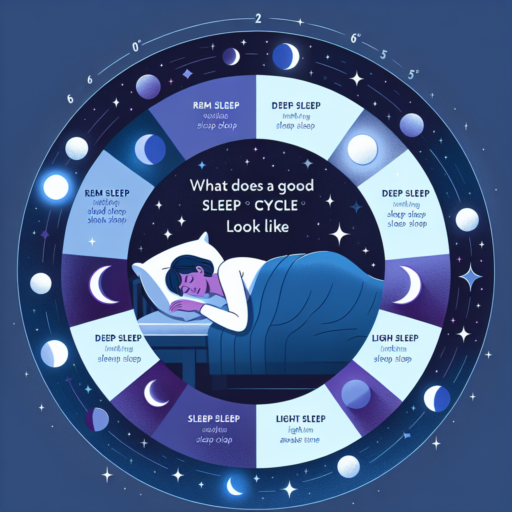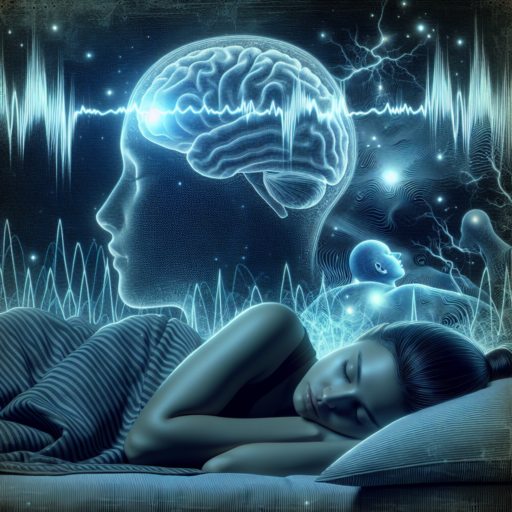No se han encontrado productos.
What does a healthy sleep cycle look like?
A healthy sleep cycle, often referred to as good sleep hygiene, is crucial for our physical, mental, and emotional well-being. It constitutes different stages that our body and mind go through to recover and rejuvenate. Understanding these stages and their importance can help us tailor our habits for better sleep health.
The cycle kicks off with light sleep, where we drift in and out of sleep, and can be easily awakened. This stage is pivotal for slowing down the heartbeat and relaxing the muscles, setting the stage for deeper sleep phases. After approximately half an hour, we transition into deep sleep, which is critical for physical recovery, hormone regulation, and growth. This is when the body repairs muscles, tissues, and rejuvenates itself.
Following deep sleep, we enter the Rapid Eye Movement (REM) phase, where most of our dreaming occurs. REM sleep is essential for cognitive functions, including memory consolidation, learning, and emotional processing. A healthy cycle will repeat these stages several times nightly, with an increasing duration of REM stages towards the morning.
What is the best sleep cycle intervals?
Understanding the best sleep cycle intervals is crucial for optimizing rest and enhancing overall health. Our bodies follow a natural pattern known as the sleep-wake cycle, primarily governed by circadian rhythms.
One of the most advocated structures for sleep is segmented into 90-minute cycles. Within each cycle, the body transitions through different sleep stages, including light sleep, deep sleep, and REM (Rapid Eye Movement) sleep. Experts suggest that completing five or six 90-minute cycles, totaling approximately 7.5 to 9 hours of sleep per night, is ideal for most adults.
Why 90-Minute Intervals?
The 90-minute sleep cycle is significant because it mirrors the body’s natural rhythm, allowing sleepers to awaken feeling more refreshed if they wake up at the end of a cycle rather than during. This cycle’s composition—transitioning from light sleep to deep sleep and then REM—supports various restorative processes essential for memory, mood regulation, and physical recovery.
Customization Is Key: It’s important to note that individual needs may vary. Some individuals might find that slightly shorter or longer cycles work best for them, influenced by genetic predispositions or lifestyle factors. Monitoring your sleep patterns or using a sleep tracker can help fine-tune your sleep cycle intervals for optimum rest.
Implementing a consistent sleep schedule that complements these 90-minute intervals can significantly improve sleep quality and, by extension, overall well-being. By aligning our sleep patterns with these natural cycles, we can wake up feeling more rejuvenated and ready to tackle the day.
How much REM deep and light sleep is normal?
Understanding the different stages of sleep, especially REM, deep, and light sleep, is crucial for assessing whether you’re getting enough restorative rest each night. Each stage plays a significant role in overall health and well-being. REM sleep is particularly known for its importance in emotional regulation and memory retention, while deep sleep helps with physical recovery and immune system strengthening. Light sleep, on the other hand, occupies the majority of your sleep cycle, acting as a transition between deep sleep and REM stages.
For a healthy adult, approximately 20-25% of total sleep time is spent in REM sleep. This translates to around 90-120 minutes for the average 7-9 hours of sleep recommended by sleep experts. Deep sleep, the most restorative phase, should account for about 13-23% of your sleep, which is roughly 60-110 minutes per night. The remainder of the sleep cycle is predominantly composed of light sleep, which should make up the biggest percentage of your sleep pattern.
It’s also essential to understand that these percentages can vary depending on several factors including age, sleep habits, and overall health. For instance, infants and young children require a higher proportion of deep sleep for development. Adults over 65 years old, however, may experience a decrease in deep sleep and an increase in light sleep stages. Monitoring these sleep stages and maintaining a consistent sleep schedule can help in achieving the optimal balance of REM, deep, and light sleep for improved health and well-being.
How long should you be in each stage of sleep?
Understanding the duration of each stage of sleep can significantly improve one’s sleep quality. The human sleep cycle consists of multiple stages, each playing an essential role in overall health and well-being. We cycle through these stages multiple times throughout the night, with varying lengths of time spent in each.
Non-REM Sleep, which consists of three stages, begins immediately upon falling asleep. The first stage, a light sleep, lasts for about 1-5 minutes, serving as a transition period into sleep. The second stage, also light sleep, occupies approximately 55% of total sleep, lasting about 10-25 minutes in each cycle. The third stage, known as deep sleep or slow-wave sleep, is crucial for physical recovery, memory consolidation, and hormonal regulation. Adults should aim to spend 20-40 minutes in this stage per cycle.
REM Sleep Duration
The final stage, REM sleep, characterizes itself by rapid eye movement, dreaming, and increased brain activity similar to wakefulness. It begins about 90 minutes after falling asleep. Early night cycles may have shorter REM periods, lasting around 10 minutes, but as the night progresses, these can extend up to an hour long in the final sleep cycles. Ideally, REM should constitute about 20-25% of adult sleep, which is crucial for cognitive functions such as learning, memory retention, and mood regulation.




